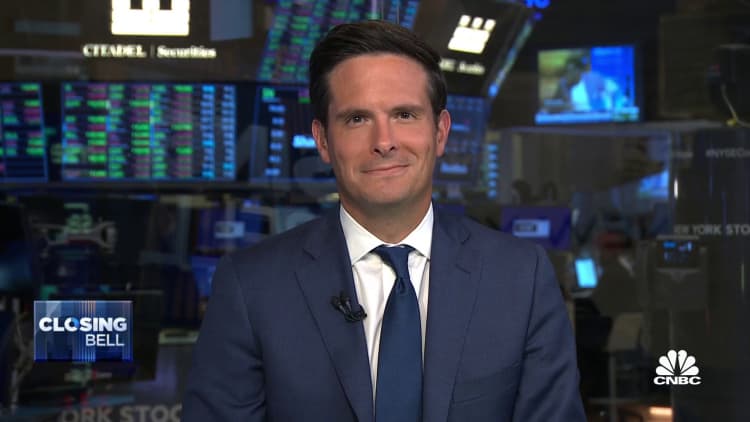Monty Rakusen | Digitalvision | Getty Images
Commodities aren’t for everyone, as they can be tricky investments.
But for individual investors willing to learn the basics and accept volatility, a judicious allocation can make sense. This can diversify traditional portfolios of stocks and bonds, hedge against geopolitical risk and protect against sustained inflation.
Yet buying at the right time is critical. Key indicators suggest that now may be such a time.
Many individuals may not know much more about this somewhat opaque investment than they learned from the 1983 movie “Trading Places,” where characters played by Eddie Murphy and Dan Aykroyd turned the tables on corrupt brokers seeking to corner the market on concentrated frozen orange juice. Though this satire naturally is far-fetched, it nevertheless demonstrates the mercurial nature of commodity price movements and the importance of investing tactically.
In today’s real world, although near-term outlooks for commodities markets call for considerable choppiness, two bellwether commodities suggest generally strong performance for the overall category this year and into 2024.
Copper is king — and oil’s a bellwether, too
Chief among indicators is copper. This highly conductive metal is known among commodities traders as King Copper because its performance has historically been an indicator for the entire metals category and for commodities in general. It’s also known as Dr. Copper, as though it were a metal with a doctorate in economics, because its performance is often predictive of shifts in domestic and global economic output.
Copper is used in myriad consumer and industrial products — a range that’s expanding with the electrification of everything from lawnmowers to toilets, the rise of electric vehicles and the growth of solar and wind farms. Increasing demand for copper tends to precede rising sales of a broad range of products and, to some extent, economic growth.
Prices hit a 20-year high in late 2021 and then fell sharply. In July, copper spiked up substantially from this year’s May low, and though wavering since, now seems poised to trend higher in the coming months, barring a significant downside catalyst such as a recession (widely predicted for more than a year now but showing up with the punctuality of Godot).

Current strong copper forecasts reflect positive outlooks for companies that mine and process other metals and minerals used in EV batteries, including aluminum, lithium, cobalt, manganese, nickel and iron — and for industrial materials in general.
Another bellwether for the entire commodities category is crude oil. Crude has shown distinct momentum recently, with 90% of S&P energy stocks above their 50-day moving average as of mid-August, with room to run. Crude hit the skids during the pandemic and then rose in early 2022, reaching pre-pandemic highs before declining below late-2019 levels the rest of the year, tamped down by — again — recession fears.
Then, in late 2022 through the first half of this year, crude climbed and, after some downward waffling, went on to build momentum and break its 200-day moving average earlier this summer by hitting $79 per barrel. In mid-August, benchmark West Texas Intermediate (WTI) completed seven straight weeks of gains, reaching $84.89. This kind of pattern has historically tended to presage sustained positive performance, a good sign for the remainder of 2023.
Sales from the now-depleted U.S. Strategic Petroleum Reserve appear to have ended, and the Russia-Ukraine war will continue to impede shipments from the Russian port of Novorossiysk (where about 2% of the world’s oil is shipped). Thus, the current scenario is one of crimped supply with sustained high demand.
While copper and oil are key indicators for the commodity markets overall, following them is of course no substitute for researching specific commodities.
Beware of some commodities pitfalls
Investors who don’t know a pork belly from a slab of bacon should be prepared for a steep learning curve — and potentially painful pitfalls. They should be aware that:
- Investing in commodities — whether hard (mined or extracted) or soft (grown or raised) — is much different from investing in conventional stocks. In buying shares of stock, per se, investors buy a piece of a company’s long-term future, whereas commodities immediately expose them to trading pressures from ever-flexing global supply-and-demand scenarios of metals, crops, energy, livestock, forest products and other areas. Prices can be whipsawed by intense momentary speculation on scant news. Yet, as with any investment, success requires looking beyond short-term fluctuations at factors that may indicate sustained trends.
- Many commodities funds have substantial exposure to futures — contracts to buy or sell a predetermined amount of a given commodity at a set time for a set price. Some individuals conflate futures with options, which give holders the right but not the obligation to buy or sell the underlying asset. By contrast, futures contracts are an obligation.
- Exchange-traded notes aren’t direct investments. Rather, ETNs are basically debt instruments backed by the issuer. So, investors must not only understand the dynamics of underlying commodity and the issuer’s track record, but also the issuers’ financial condition, including their ability to pay carrying costs — in the case of corn, rents on silos until sale. When storing corn for months, the owner is essentially speculating that the costs of doing so will be less than the increase in the market price of corn over the holding period.
Considering ETFs and stocks instead
Bill Ross | The Image Bank | Getty Images
Instead of ETNs, most individual investors are usually better off making direct investments through exchange-traded funds — preferably, those without substantial exposure to futures. Examples currently worth a look include VanEck Natural Resources ETF (HAP), offering substantial exposure to energy and materials, and VanEck Agribusiness ETF (MOO), with substantial holdings in agricultural products and services. For those prepared for futures exposure, Invesco Optimum Yield Diversified Commodity Strategy No K-1 ETF (PDBC) has holdings in various heavily traded commodities.
Individual stocks to consider now include: Southern Copper Corp. (SCCO); Freeport-McMoRan (FCX), copper, gold, molybdenum and silver; Chevron Corp. (CVX); Schlumberger (SLB), oilfield services; The Mosaic Company (MOS) and CF Industries Holdings (CF), fertilizer; Deere & Co. (DE), farm machinery; and Archer-Daniels-Midland Co. (ADM), agricultural storage and processing.
With commodities, investors should be prepared to shrug off dips that may occur soon after purchasing. Decisions to buy should reflect the conviction necessary to hold amid volatility.
— By Dave Gilreath, certified financial planner and partner/CIO, and Seth Hickle, derivatives portfolio manager, Sheaff Brock Investment Advisors and its institutional arm, Innovative Portfolios

